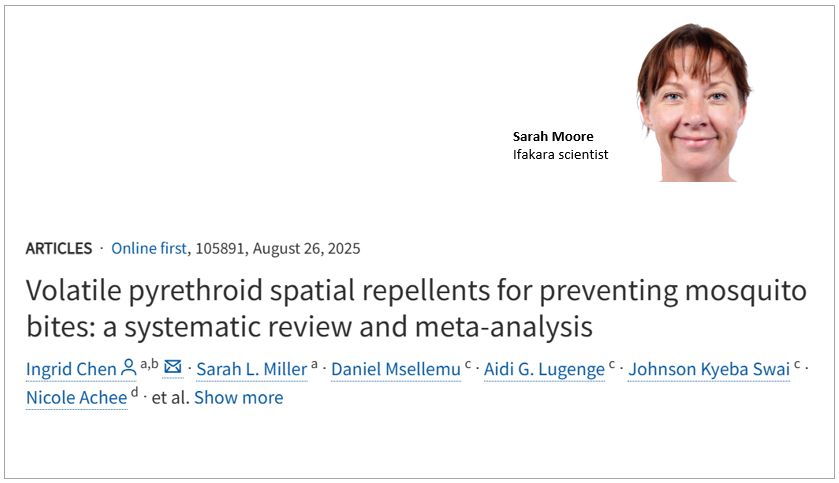
BREAKTHROUGH: New mosquito control tool provides lasting protection

Soon, communities in Tanzania and beyond may benefit from a groundbreaking mosquito control tool that provides protection for up to a year, thanks to new global analysis led by the Ifakara Health Institute (IHI) and the University of California, San Francisco (UCSF).
In the analysis, published today in eBioMedicine by The Lancet today researchers reviewed more than 25 years of data on some 1.7 million mosquitoes, and concluded that a new type of repellent known as “spatial emanators” – sheet-like devices that release insecticides into the air—can reduce mosquito bites by more than half.
The analysis comes just as the World Health Organization (WHO) issued a new recommendation in August supporting the use of spatial emanators, the first new vector control product class available in more than 40 years. The repellent offers longer-lasting protection up to a year against mosquitoes that spread malaria, as well as dengue, West Nile, yellow fever, and Zika.
Stronger protection against mosquitoes
Unlike traditional repellents, which require frequent application or only last for a few hours, spatial emanators can remain effective for weeks or even months. One product tested, SC Johnson Guardian™, can protect for up to a year.
Professor Sarah Moore, a senior scientist at IHI and lead author of the study, explained: “Spatial emanators are the first repellents to offer protection lasting up to a year. They complement indoor spraying and insecticide-treated nets (ITNs), providing long-lasting protection beyond sleeping hours—especially where mosquitoes bite outside of the night or people don’t use bed nets.”
Dr. Ingrid Chen, first author and associate professor of epidemiology and biostatistics at UCSF, added: “This method is lightweight, affordable, and easy to use, helping protect people worldwide from mosquito-borne diseases.”
Ifakara’s contribution to global science
Nearly 50 researchers from 15 countries contributed to this study, including 14 IHI scientists and half of the data sets originated from IHI. Prof. Sarah Moore, who has worked at IHI for 20 years, served as the senior author.
For decades, IHI has been at the forefront of malaria research, working to find practical solutions that protect Tanzanians and communities across Africa.
Malaria still a big threat
Malaria remains one of the deadliest diseases in Tanzania and across sub-Saharan Africa. In 2023 alone, malaria killed nearly 600,000 people worldwide—most of them young children in Africa. While bed nets and spraying have saved millions of lives, challenges like insecticide resistance, limited funding, and changing mosquito behavior mean new tools are urgently needed.
Affordable and practical tool
Spatial emanators require no electricity, heating, or constant reapplication, making them suitable for both urban households and rural areas like in Tanzania. This breakthrough offers hope for stronger, longer-lasting protection in the fight against malaria and other mosquito-borne diseases.
Read the publication on The Lancet
